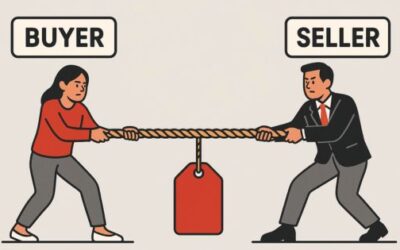Walk into any modern sales organization today, and you’ll see dashboards glowing with activity metrics, pipelines filled with “high-probability” deals, and sales teams trained in a smorgasbord of methodologies.
On the surface, it looks like progress. In reality, most of it is noise.
Despite record investments in sales tech, training, and enablement, win rates are down, forecasts are wrong, rep productivity is stagnant, and customer acquisition costs keep climbing. Ask most CROs why, and the answers will range from “macro headwinds” to “talent issues” to “pipeline quality.”
But here’s the uncomfortable truth: The majority of sales organizations don’t actually run on a cohesive, connected system.
They’ve got tools. They’ve got processes. They’ve got methodology decks collecting dust. What they don’t have is the equivalent of an operating system—a unifying framework that connects skills, execution, and validation into a single, functioning whole. Without it, the GTM engine misfires, stalls, and fails to produce predictable results.
The Illusion of Structure
Sales is the only critical business function that still largely runs on tribal knowledge and fragmented processes.
Finance runs on GAAP. Product runs on Agile or Scrum. Manufacturing runs on Six Sigma or Lean.
Sales? It runs on hope, habits, and heroics.
Even the “structured” organizations aren’t as structured as they think. The methodology they rolled out two years ago? It’s only half-adopted. The CRM process? Customized beyond recognition. The weekly deal review? More of a forecast theater than an actual inspection.
This lack of systemic cohesion is why the same problems keep surfacing:
- Deals stall late in cycle with no clear reason.
- Forecasts swing wildly quarter to quarter.
- Pipeline coverage looks healthy but hides a quality crisis.
- Reps “follow the process” yet still miss quota.
In other words, the GTM machine isn’t broken because of the market—it’s broken because it’s not really a machine.
Why CROs Are Feeling It Now
For years, a hot market and growing budgets papered over these cracks. Even with inefficiency, growth was achievable. That’s no longer the case.
Today’s environment punishes waste. Investors want profitability, not just top-line growth. Boards are scrutinizing every dollar of CAC. And buyers—armed with more information and alternatives than ever—are harder to move off the status quo.
Without a true system, CROs are left managing symptoms instead of causes. They tweak compensation plans. They add another enablement program. They run more pipeline calls. Yet none of it creates sustainable lift, because the core GTM logic layer is missing.
What Happens Without a GTM Operating System
Think of your GTM like a Formula 1 car. The engine is your sellers, the fuel is your leads, and your tech stack is the chassis. Without a connected operating system, your telemetry is wrong, your pit crew is guessing, and your driver is improvising every lap.
The results are predictable:
- Inconsistent revenue performance. Good quarters feel like luck, bad quarters feel like a surprise.
- Misaligned execution. Marketing campaigns, sales motions, and enablement initiatives operate in silos.
- Low forecast confidence. Leaders can’t accurately call the number because they don’t have a validated picture of buyer readiness.
It’s not that sales leaders don’t work hard enough—it’s that they’re working without the equivalent of air traffic control.
The Shift CROs Must Make
The most effective revenue leaders are now thinking like operators, not just motivators. They’re moving beyond “process” as a checklist and building a problem-centric GTM operating system—a framework that connects:
- How reps are trained to diagnose buyer problems.
- How opportunities are inspected and coached in real time.
- How buyer readiness is validated before it’s forecasted.
When these layers are connected, revenue becomes more predictable, reps perform with greater consistency, and leaders stop being surprised at the end of the quarter.
The Takeaway
Sales doesn’t need more tools, another methodology flavor-of-the-year, or one more dashboard.
It needs a connected operating system—a unifying framework that ensures every layer of the GTM motion works together to diagnose, execute, and validate in sync.
Without it, CROs will keep fighting the same battles: bloated pipelines, stalled deals, and missed numbers. With it, they can finally run sales with the same rigor and predictability as any other mission-critical business function.
Because in this market, the real competitive advantage isn’t more activity—it’s a system that actually works like one.



0 Comments